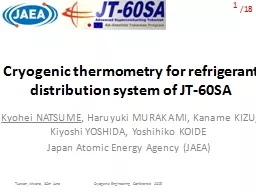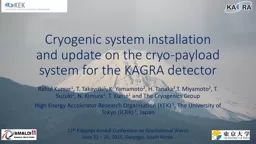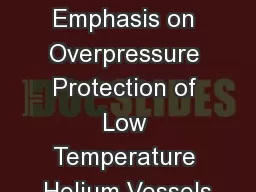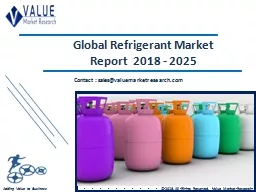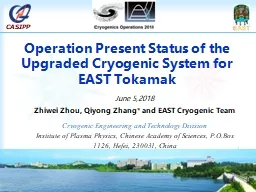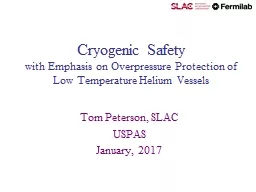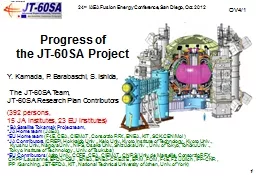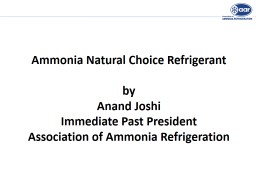PPT-Cryogenic thermometry for refrigerant distribution system of JT-60SA
Author : mrsimon | Published Date : 2020-08-03
Kyohei NATSUME Haruyuki MURAKAMI Kaname KIZU Kiyoshi YOSHIDA Yoshihiko KOIDE Japan Atomic Energy Agency JAEA Tucson Arizona 30th June Cryogenic Engineering Conference
Presentation Embed Code
Download Presentation
Download Presentation The PPT/PDF document "Cryogenic thermometry for refrigerant di..." is the property of its rightful owner. Permission is granted to download and print the materials on this website for personal, non-commercial use only, and to display it on your personal computer provided you do not modify the materials and that you retain all copyright notices contained in the materials. By downloading content from our website, you accept the terms of this agreement.
Cryogenic thermometry for refrigerant distribution system of JT-60SA: Transcript
Download Rules Of Document
"Cryogenic thermometry for refrigerant distribution system of JT-60SA"The content belongs to its owner. You may download and print it for personal use, without modification, and keep all copyright notices. By downloading, you agree to these terms.
Related Documents

